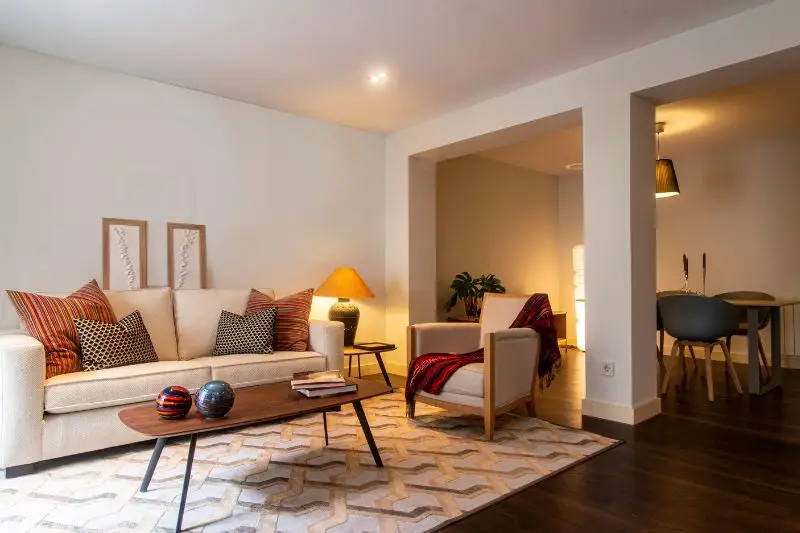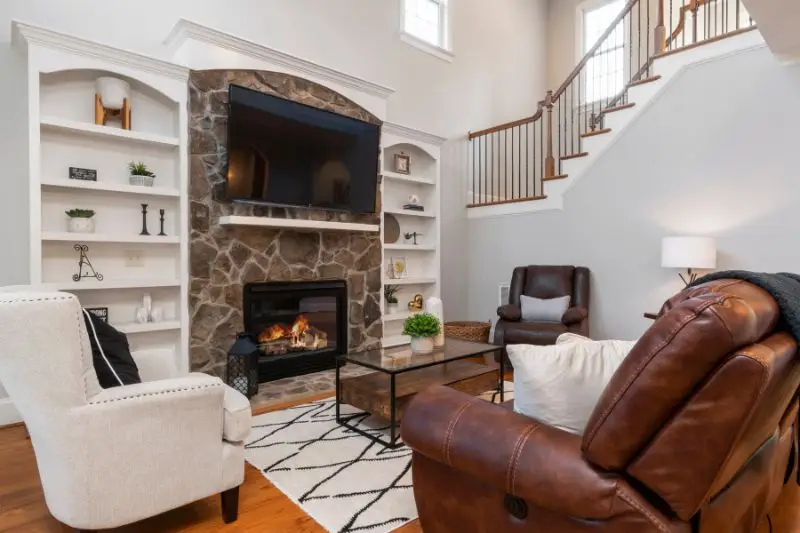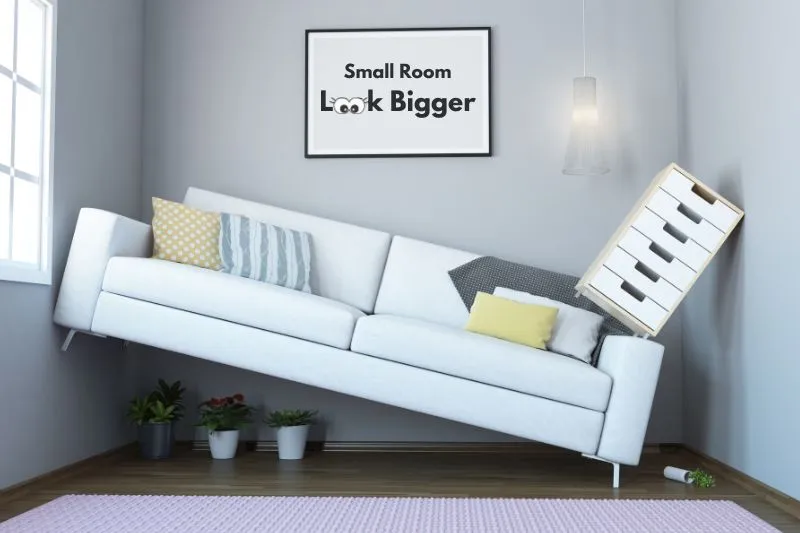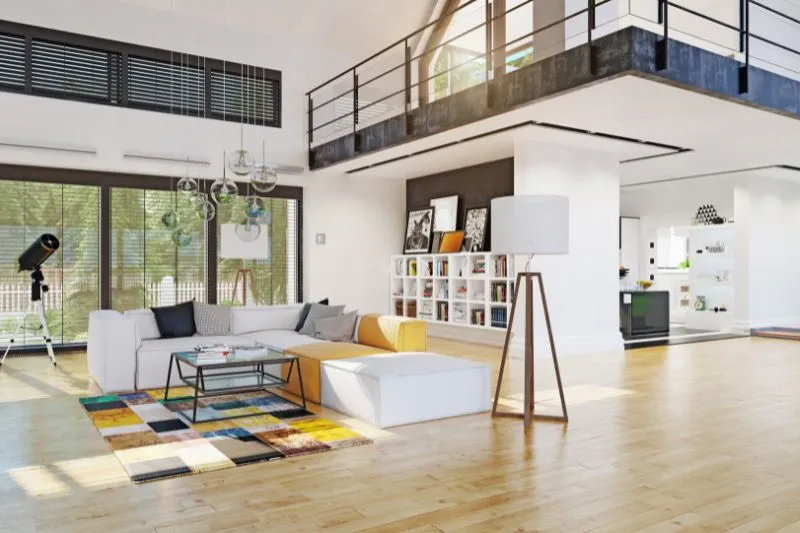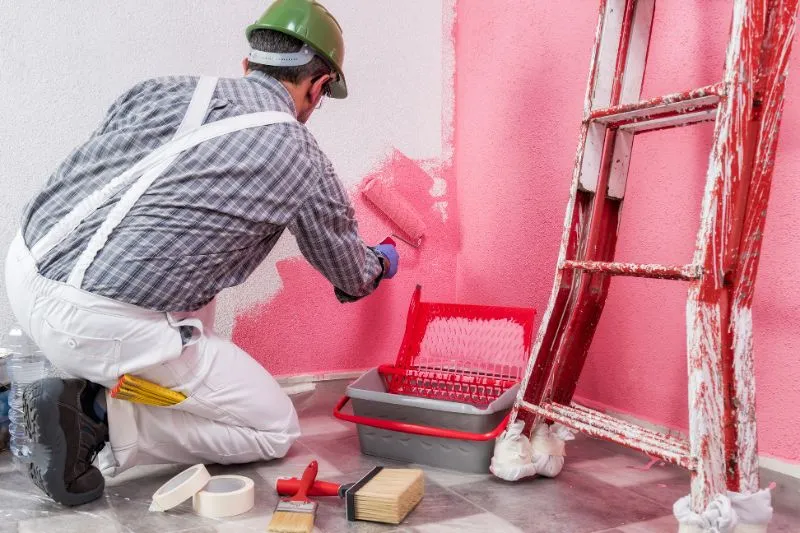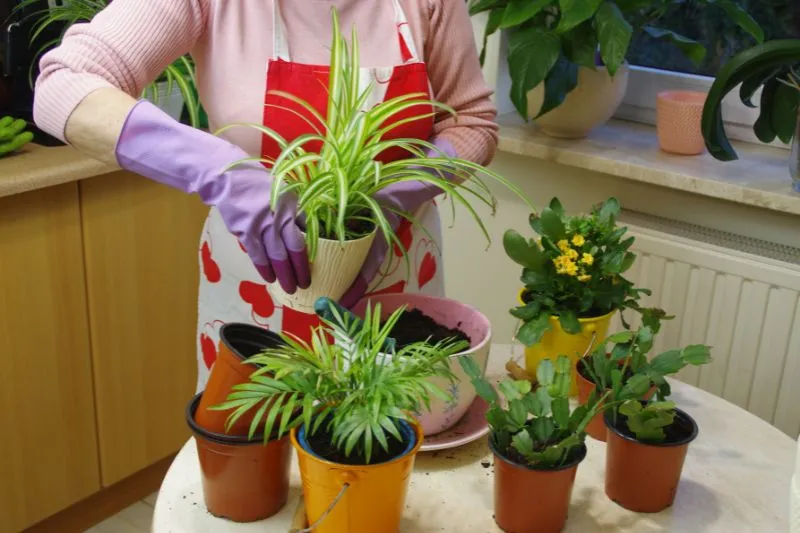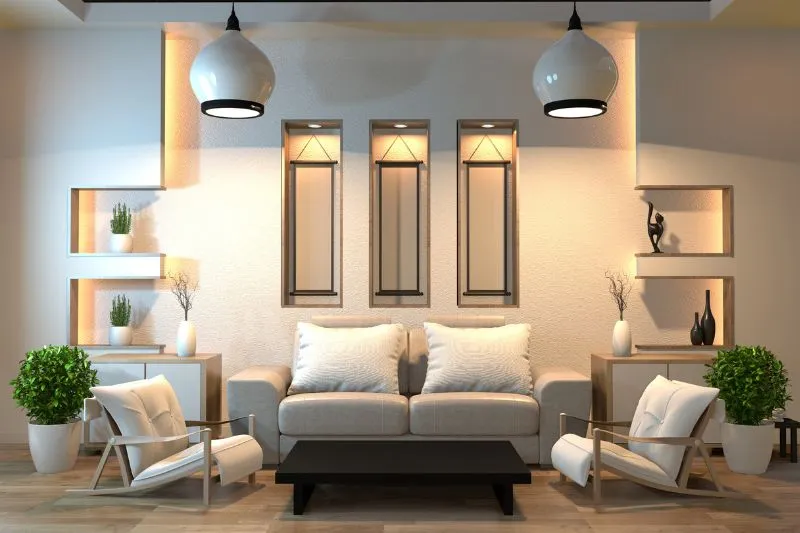
Introduction
Interior design tips is an exciting and creative way to make your living space more comfortable, functional, and visually appealing. Whether you’re decorating a new home or looking to refresh your current space, knowing a few key interior design can make a significant difference. In this comprehensive guide, we’ll explore essential interior design that can help you transform your home.

Get 75% OFF Now
1. Start with a Plan
Before you start buying furniture or painting walls, it’s crucial to have a solid plan. Consider your needs, the function of each room, and your personal style. Create a mood board or a digital collection of design ideas that inspire you. This planning phase will help guide your decisions and keep you on track with your interior design.
Benefits:
- Ensures cohesive design
- Prevents impulsive purchases
- Clarifies your vision
2. Choose a Color Scheme
Selecting the right color scheme is fundamental in interior design. Colors can affect your mood and the perceived size of a room. Light colors make spaces feel larger and brighter, while dark colors add a cozy and intimate feel. Use a primary color for the walls, a secondary color for larger accents, and a third color for smaller accessories.
Benefits:
- Creates a harmonious look
- Sets the mood of the space
- Enhances the room’s aesthetics
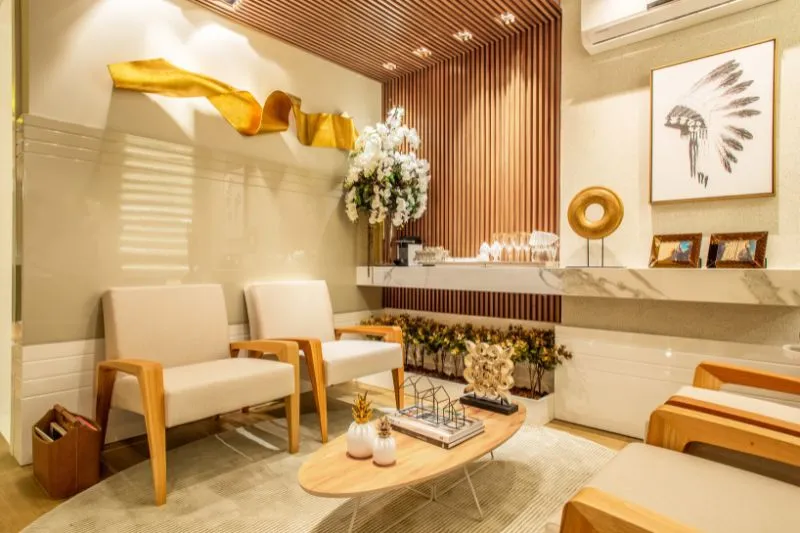
Read more blog: The Best Indoor Plants for Every Room and Skill Level
3. Focus on Lighting
Lighting plays a crucial role in interior design. It can influence the mood, highlight architectural features, and make spaces look larger. Use a mix of lighting sources, including ambient (general lighting), task (reading lamps, under-cabinet lighting), and accent (spotlights, wall sconces). Natural light is also essential, so make the most of windows and consider adding mirrors to reflect light.
Benefits:
- Enhances the room’s functionality
- Improves mood and ambiance
- Highlights design elements
4. Invest in Quality Furniture
Quality furniture is a worthwhile investment in interior design. It not only lasts longer but also provides better comfort and style. Look for pieces that are both functional and aesthetically pleasing. Consider the size of your room when choosing furniture – oversized pieces can overwhelm a small space, while too-small pieces can make a large room feel sparse.
Benefits:
- Long-lasting durability
- Enhances comfort
- Adds value to your home
5. Mix Textures and Patterns
Incorporating a variety of textures and patterns adds depth and interest to your design. Combine smooth and rough textures, shiny and matte finishes, and different fabrics. Patterns can range from subtle to bold, depending on your style. Just be careful not to overdo it; balance is key in interior design.
Benefits:
- Adds visual interest
- Creates a cozy and inviting atmosphere
- Reflects personal style

Get 75% OFF Now
6. Personalize Your Space
Your home should reflect your personality and interests. Incorporate personal touches such as family photos, travel souvenirs, or DIY projects. Customizing your space makes it unique and gives it a sense of warmth and character, which is essential in interior design.
Benefits:
- Makes your home unique
- Adds sentimental value
- Enhances comfort and enjoyment
7. Create Functional Zones
Especially in open-plan spaces, defining different areas for specific purposes can enhance functionality. Use rugs, furniture arrangements, or room dividers to create zones for dining, lounging, working, and entertaining. This helps to organize the space and make it more user-friendly, following interior design tips.
Benefits:
- Improves space organization
- Enhances functionality
- Creates a more efficient layout
8. Use Mirrors Strategically
Mirrors are not only decorative but also functional in interior design. They can make a small space look larger and reflect light to brighten up a room. Place mirrors opposite windows to maximize natural light or use them to create interesting focal points.
Benefits:
- Enhances the perception of space
- Improves lighting
- Adds decorative elements
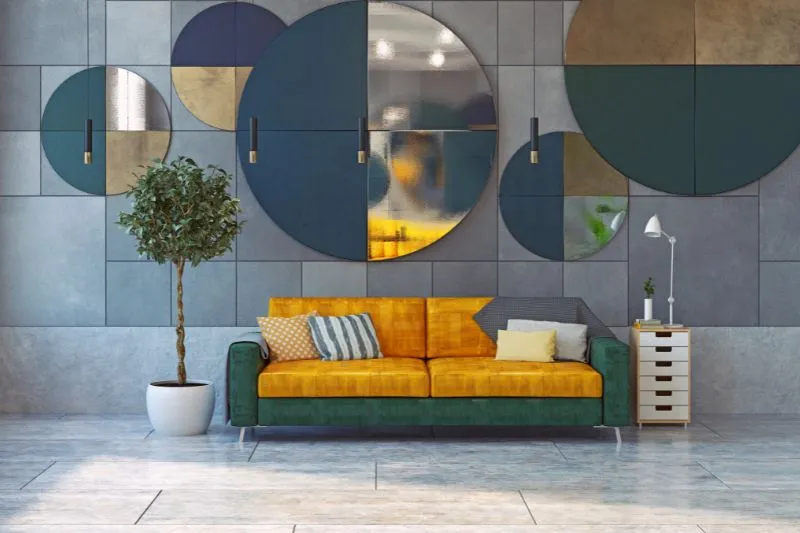
9. Add Greenery
Plants can breathe life into any room. They add color, improve air quality, and create a calming effect. Choose low-maintenance plants if you don’t have a green thumb, or mix different types of plants for variety, following interior design tips.
Benefits:
- Enhances aesthetics
- Improves indoor air quality
- Adds a natural element to your decor
Read more blog: How to Make a Small Room Look Bigger
10. Keep It Clutter-Free
Clutter can make even the most beautifully designed space feel chaotic and cramped. Invest in smart storage solutions to keep your home organized. Regularly declutter and get rid of items you no longer need. A tidy space is more relaxing and visually appealing, which is a key point in interior design.
Benefits:
- Creates a more organized space
- Reduces stress
- Enhances the overall look of the room
11. Incorporate Art and Decor
Art and decor pieces are the finishing touches that bring your design together. Choose pieces that complement your color scheme and style. Mix different types of artwork, such as paintings, sculptures, and textiles, to add interest and personality to your space, following interior design tips.
Benefits:
- Adds personality and style
- Complements the overall design
- Creates focal points
12. Pay Attention to Scale and Proportion
The scale and proportion of furniture and decor items are crucial to creating a balanced space. Ensure that your furniture fits the size of your room and that decor items are proportionate. Too much large furniture can overwhelm a space, while too many small items can look cluttered. This balance is important in interior design.
Benefits:
- Creates a balanced look
- Enhances the room’s functionality
- Improves aesthetics
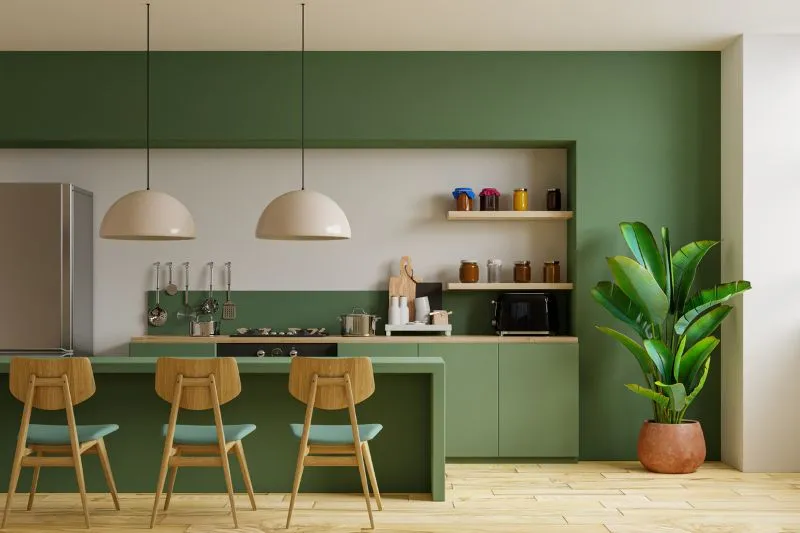
13. Incorporate Smart Home Technology
Smart home devices can enhance the functionality and convenience of your home. From smart lighting and thermostats to voice-activated assistants and security systems, integrating technology can make your life easier and your home more efficient, following modern interior design.
Benefits:
- Increases convenience
- Enhances home security
- Improves energy efficiency
14. Use Rugs to Define Spaces
Rugs can define different areas within a room and add warmth and texture. Choose rugs that complement your color scheme and add visual interest. Layering rugs can also add depth and dimension to your space, following interior design tips.
Benefits:
- Defines different zones
- Adds warmth and texture
- Enhances the overall design
15. Don’t Forget the Ceiling
The ceiling is often called the “fifth wall” in interior design. Painting it a different color, adding wallpaper, or incorporating architectural elements like beams or molding can add interest and make a room feel more finished.
Benefits:
- Adds a unique design element
- Enhances the overall look of the room
- Makes the space feel more complete
16. Embrace Minimalism
Minimalism focuses on simplicity and functionality. It involves keeping only what you need and love, creating a clean and uncluttered space. Embracing minimalism can make your home feel more serene and spacious, which is a valuable lesson in interior design.
Benefits:
- Reduces clutter
- Creates a calm environment
- Enhances functionality

Get 75% OFF Now
17. Create a Cohesive Look
A cohesive look ensures that all the elements in your home work together harmoniously. This involves choosing a consistent color scheme, style, and theme throughout your space. A cohesive design makes your home feel more unified and aesthetically pleasing, following interior design tips.
Benefits:
- Creates a unified look
- Enhances visual appeal
- Makes the space feel well-designed
18. Consider the Flow
The flow of a room refers to how easy it is to move around and use the space. Ensure that there are clear pathways and that furniture placement doesn’t obstruct movement. Good flow makes a room more functional and comfortable, which is a key concept in interior design.
Benefits:
- Improves functionality
- Enhances comfort
- Creates a user-friendly space
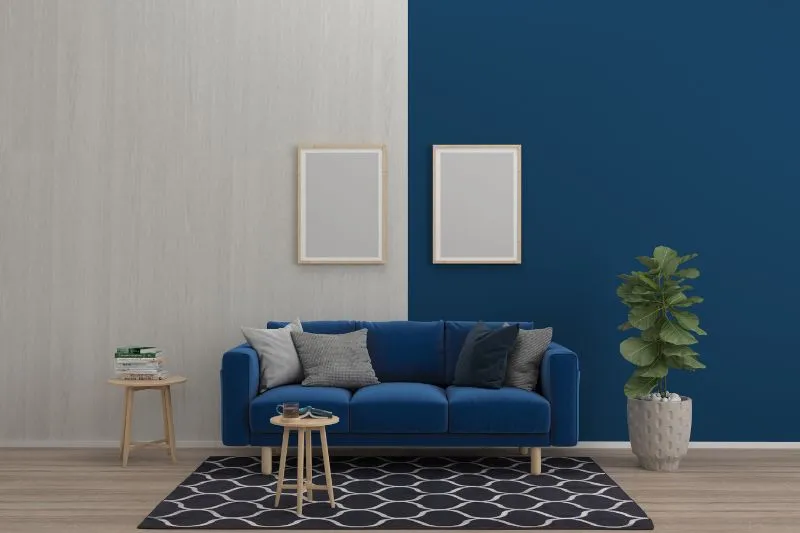
19. Invest in Timeless Pieces
Trendy items can quickly go out of style, so it’s wise to invest in timeless pieces that will stand the test of time. Classic furniture and decor items are not only durable but also versatile, allowing you to easily update your space with accessories and accents. This strategy is a staple in interior design.
Benefits:
- Long-lasting style
- Versatile and adaptable
- Cost-effective in the long run
20. Incorporate Personal Touches
Finally, make sure your home reflects your personal style and taste. Whether it’s a favorite piece of art, a family heirloom, or a collection of travel souvenirs, personal touches make your home uniquely yours and add warmth and character. This personal touch is essential in interior design.
Benefits:
- Reflects your personality
- Adds sentimental value
- Enhances comfort and enjoyment
Read more blog: Modern Home: The Ultimate Guide to Contemporary Living
Conclusion
Interior design are all about creating a space that is both functional and aesthetically pleasing. By following these interior design tip and incorporating your personal style, you can transform any room in your home into a beautiful and comfortable sanctuary. Whether you’re working with a large space or a small one, these interior design will help you make the most of your interior design efforts. Happy decorating!
Frequently Asked Questions (FAQs)
Q: How do I choose a color scheme for my home?
A: Start by selecting a primary color for your walls, then choose a secondary color for larger accents and a third color for smaller accessories. Consider the mood you want to create and how colors will interact with your existing furniture and decor, following interior design tips.
Q: What type of lighting is best for a living room?
A: Use a mix of ambient, task, and accent lighting. Overhead fixtures provide general light, while floor and table lamps offer task lighting. Accent lighting highlights architectural features and decor, as suggested in interior design.
Q: How can I make a small room look bigger?
A: Use light colors, mirrors, and strategic furniture placement to create the illusion of space. Keep the room clutter-free and use multi-functional furniture to maximize functionality, in line with interior design.
Q: What are some tips for decorating on a budget?
A: Shop second-hand stores, repurpose items you already have, and focus on small changes like new throw pillows, paint, or lighting. DIY projects can also save money and add a personal touch, as recommended in interior design.
Q: How do I create a cohesive look in my home?
A: Choose a consistent color scheme, style, and theme throughout your space. Use similar materials and finishes, and incorporate repeating patterns and textures for a unified look, following interior design tips.
Q: What are the benefits of incorporating plants into my decor?
A: Plants improve indoor air quality, add color and life to your space, and create a calming, natural atmosphere. They can also enhance the overall aesthetics of your home, as noted in interior design.
Q: How can I personalize my home decor?
A: Incorporate personal touches such as family photos, travel souvenirs, or DIY projects. Display items that reflect your interests and personality to make your space uniquely yours, following interior design tips.
Q: What are the best storage solutions for a small space?
A: Use multi-functional furniture with built-in storage, utilize vertical space with shelves and wall-mounted cabinets, and keep surfaces clear of clutter. Regularly declutter to maintain an organized space, as suggested in interior design.

